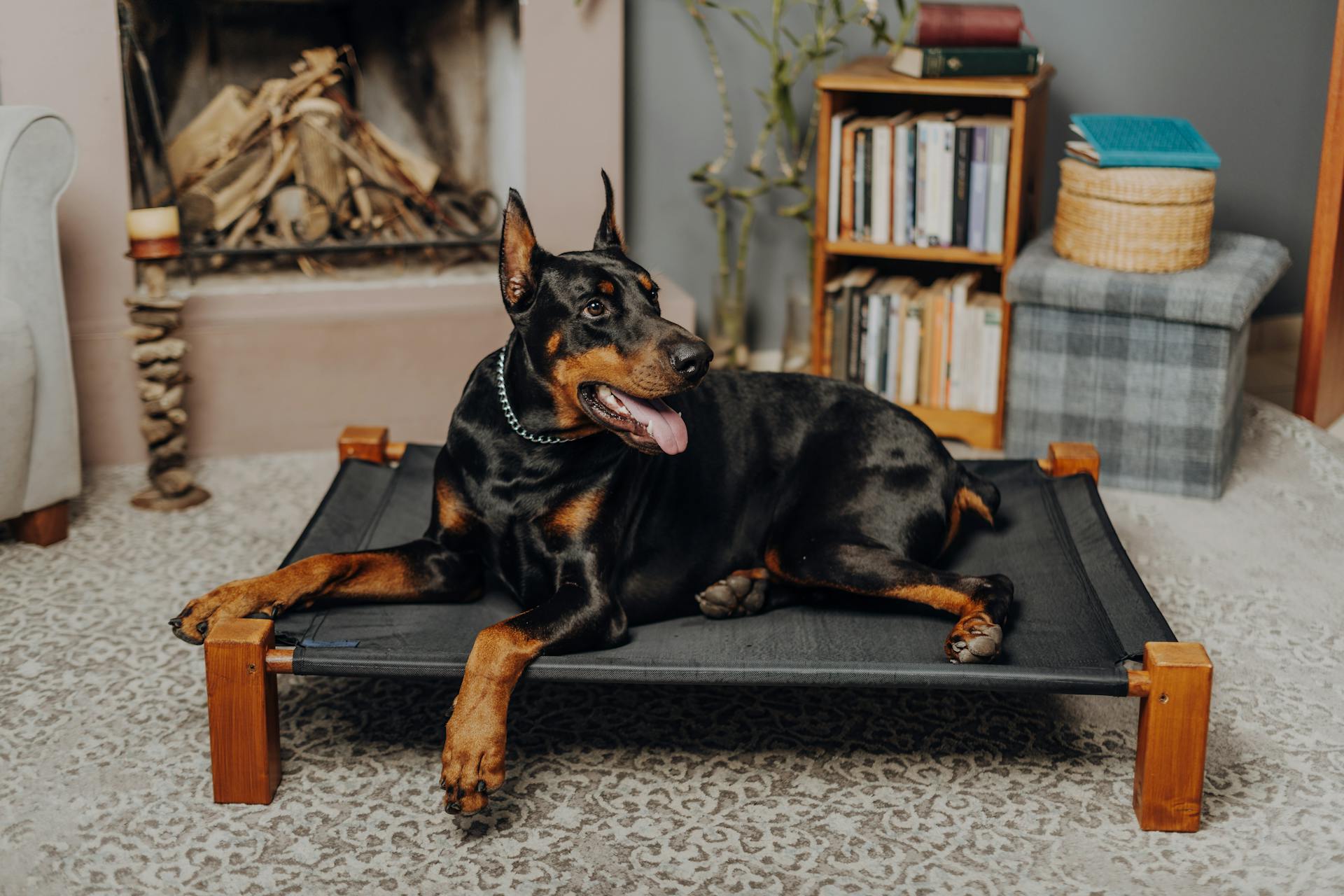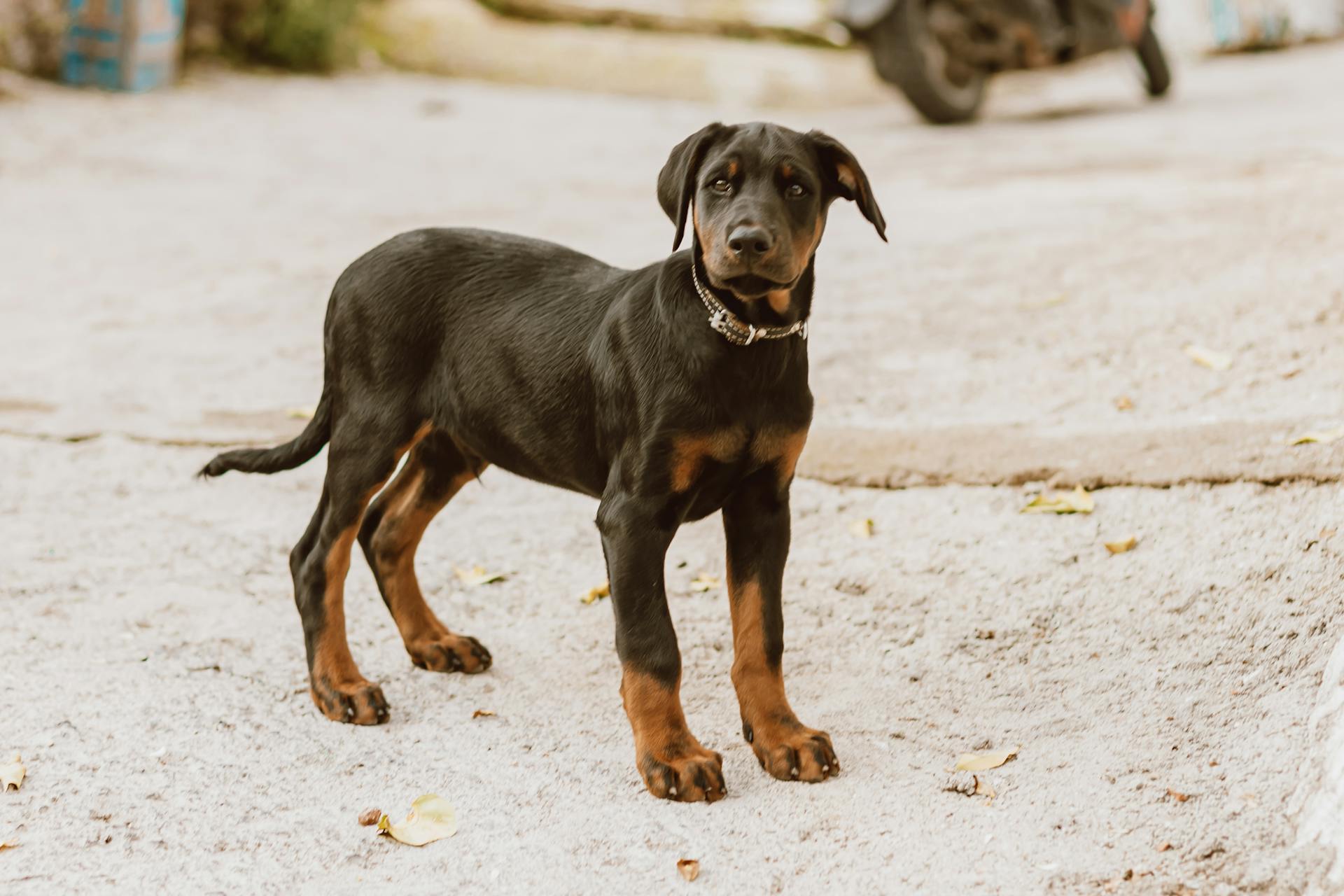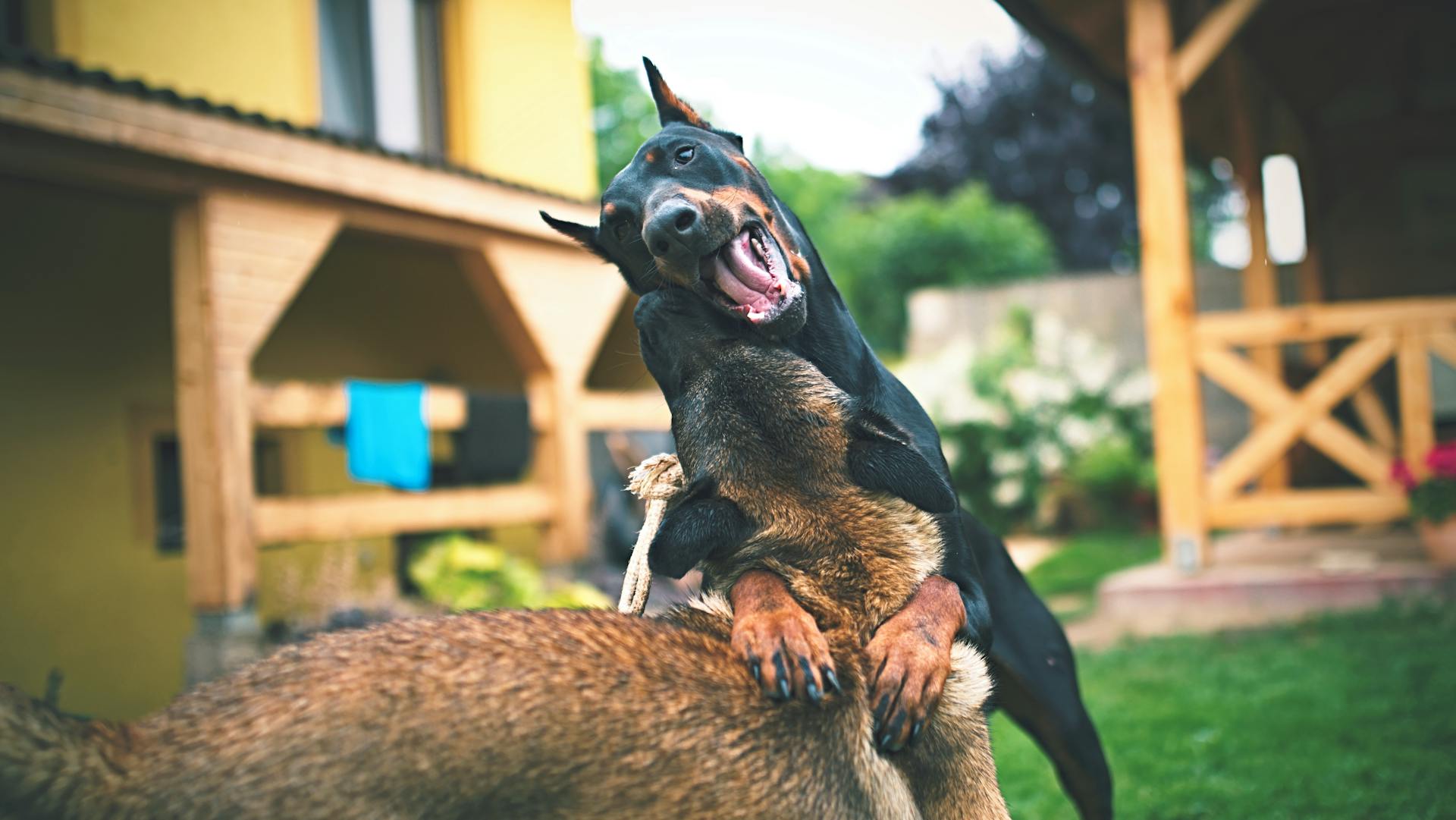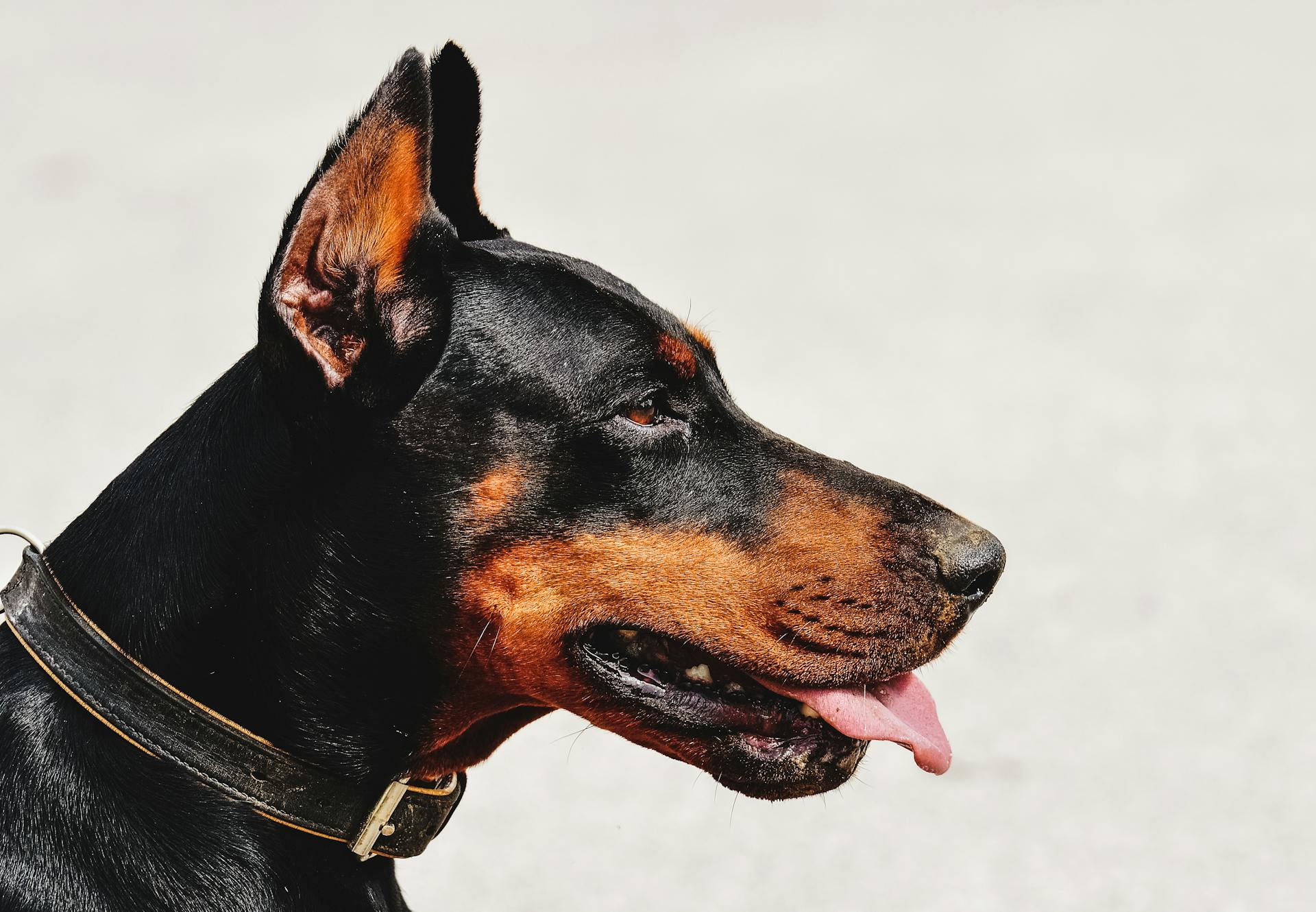
The German Doberman Pinscher is a sleek and agile breed that originated in Germany in the late 19th century.
Developed by Friedrich Louis Dobermann, a tax collector and dog breeder, this breed was designed to be a loyal companion and guard dog.
German Doberman Pinschers are known for their distinctive appearance, with a muscular build, short coat, and wedge-shaped head.
They typically weigh between 60-80 pounds and stand between 24-28 inches tall at the shoulder.
You might enjoy: Doberman Pinscher Breed Standard
History and Origins
The Doberman Pinscher was developed in Germany toward the end of the 19th century.
To create this breed, Germans selected dogs for their courage and intelligence. Louis Dobermann, a well-known early breeder, played a significant role in the breed's development.
The breed was developed from a mix of various breeds, including the Rottweiler, the old German Shepherd, the German Pinscher, the Manchester Terrier, and the Greyhound.
The Doberman Pinscher's appearance developed rapidly, and it was recognized by the German Kennel Club in 1899.
After World War I, Dobermans began to appear in large numbers in the United States.
The breed has been a successful working dog and a popular companion, excelling in police and military work since its introduction to the United States.
Check this out: Pit Bull Terrier Ukc
Physical Characteristics
The Doberman Pinscher is a medium-sized dog with a square-bodied, smoothly-muscled appearance.
Their head is wedge-shaped with high-set ears that can be cropped or hang naturally. The naturally arched neck flows into smooth shoulders, which continue into a strong straight topline.
The back is short, firm, level, and moderately wide, with the loin being short and muscular. The croup is broad, muscular, and slightly rounded.
The ideal height for a mature male Doberman Pinscher is 27 inches, with 26 to 28 inches being acceptable.
Their coat is short, and they come in four colors with rust markings. The appearance of the Doberman Pinscher should convey power and elegance.
You might like: Muscular Doberman Pinscher
Health and Care
As a German Doberman Pinscher owner, it's essential to be aware of the potential health concerns that can affect your furry friend. Many diseases and health conditions are genetic, meaning they are related to your pet's breed, and Doberman Pinschers are no exception.
If this caught your attention, see: Doberman Pinscher Health Concerns
Regular veterinary check-ups are crucial to monitor your dog's health and catch any potential issues early on. Be sure to adhere to the schedule of examinations and vaccinations that your veterinarian recommends.
A well-balanced diet and regular exercise are vital for your Doberman's overall health. Feed a high-quality diet appropriate for her age, and keep her diet consistent to prevent digestive issues. Avoid giving her people food, as this can lead to obesity and other problems.
Doberman Pinschers are prone to certain health conditions, including elbow dysplasia, hip dysplasia, and obesity. Regular exercise and a healthy diet can help prevent or manage these conditions.
Here are some common health conditions that affect Doberman Pinschers:
- Elbow dysplasia
- Hip dysplasia
- Obesity
- Thyroid disease
- Heart disease
To prevent or manage these conditions, make sure to:
- Provide regular exercise, but avoid overdoing it at first
- Keep your dog's weight under control through a balanced diet and regular exercise
- Brush her coat regularly to prevent matting and tangling
- Clean her ears weekly to prevent infections
- Brush her teeth at least twice a week to prevent dental problems
By following these tips and being aware of the potential health concerns that can affect your German Doberman Pinscher, you can help her live a long, happy, and healthy life.
Pinscher Overview and Lifestyle
The German Doberman Pinscher is a courageous and loyal breed that originated in Germany in the 19th century. They were bred to protect their owner, Louis Dobermann, from citizens he collected taxes from.
Dobermans are naturally alert and protective of their humans, making them excellent watchdogs. However, they also have a fun-loving streak that makes them a joy to spend time with. They are family-oriented and generally good with young children, especially if socialized properly.
To keep your Doberman happy and healthy, it's essential to establish a routine care schedule. This includes supervising your pet as you would a toddler, keeping doors closed, and blocking off rooms as necessary. They have low grooming needs, but regular brushing of their coat and teeth is crucial.
Here are some key facts to keep in mind:
- Dobermans need regular exercise, such as daily walks, jogs, or playtime, and a spacious fenced-in yard for extra exercise and mental stimulation.
- They are sensitive dogs and don't do well with harsh training methods or punishment; always end training on a positive note.
- Dobermans have low grooming needs, but regular brushing of their coat and teeth is crucial.
- They are generally good with young children if socialized properly, but may be better suited to homes with young children than German Pinschers are.
Choosing the Right Breed
Every dog is an individual, so it's impossible to know if a dog will be right for you without meeting them.
Both German Pinschers and Dobermans are high-energy breeds that make excellent watchdogs and enjoy family life.
They can get along perfectly well with children and other pets if they've been well-socialized.
However, Dobermans might be slightly better suited to homes with young children than German Pinschers are.
If you're adopting a German Pinscher or Doberman as an adult, ask the shelter or previous owner about their suitability for a home with children and other pets.
Pinscher Overview
Doberman Pinschers originated in Germany in the 19th century and were bred by Louis Dobermann to protect him from citizens.
They're courageous dogs with a natural alertness and fierce sense of loyalty, often very protective of their humans.
Dobermans are excellent watchdogs, but their alertness is coupled with a fun-loving streak that makes them a joy to spend time with.
They're family-oriented and typically very good with young children, especially with early socialization.
Dobermans are better suited to families with young children than German Pinschers, but both breeds can get along with kids in the right environment.
Doberman Pinschers are taller and heavier than German Pinschers, with a slender, powerful build and a tucked-in waist.
They have smooth, short coats that need a quick daily brushing and come in five colors and color combinations.
Dobermans have long heads, almond-shaped eyes, and naturally floppy ears that are often cropped for a "tougher" look.
Cropping a dog's ears can affect how dogs communicate, their body language, and possibly even their hearing.
Dobermans are very energetic and agile, requiring plenty of exercise through daily walks, jogs, or play.
They need a spacious fenced-in yard to let off steam when they need to.
Doberman Pinschers are very smart, eager to please, and generally don't find it difficult to learn what's expected of them.
They need early socialization and firm but kind leadership since they can be bossy and even destructive without a capable pack leader.
Doberman Pinschers are an excellent choice for loving, active families that will give them all the attention they need and spend time properly socializing them.
You might enjoy: Doberman Pinscher Docked Ears
Care and Lifestyle
Your Doberman Pinscher is a high-energy dog that needs regular exercise to stay happy and healthy. Supervise your pet as you would a toddler to keep her out of trouble and away from objects she shouldn't put in her mouth.
A consistent diet is essential for your Doberman Pinscher. Feed a high-quality diet appropriate for her age and keep her diet consistent. Don't give her people food, as this can lead to digestive issues.
Regular grooming is also important. Brush her coat at least weekly, and clean her ears weekly, even as a puppy. Her teeth are generally good, but brushing them at least twice a week will keep them perfect.
Your Doberman Pinscher is a sensitive dog and doesn't do well with harsh training methods or punishment. Always end training on a positive note. She can be sensitive to cold, so a warm winter wardrobe is necessary.
Here's a quick rundown of your Doberman Pinscher's care needs:
- Supervise your pet as you would a toddler
- Brush her coat at least weekly
- Clean her ears weekly
- Brush her teeth at least twice a week
- Exercise her regularly, but don't overdo it at first
- Keep her diet consistent and don't give her people food
- Feed a high-quality diet appropriate for her age
By following these simple care tips, you'll be well on your way to raising a happy and healthy Doberman Pinscher.
Getting Started in Dog Sports
Getting started in dog sports can be an exciting and rewarding experience for you and your Pinscher. Intro to Dog Sports is a great place to begin, as it provides a comprehensive overview of the various dog sports available, such as agility, obedience, and tracking.
To participate in dog sports, you'll need to find a canine partner that fits your lifestyle. Canine Partners / Enroll Mixed Breed is a great resource to explore, as it allows you to search for compatible dogs based on breed, size, and energy level.
If you're new to dog sports, understanding titles and abbreviations can be confusing. Titles & Abbreviations is a helpful section that breaks down the different titles and abbreviations used in dog sports, making it easier to navigate the world of dog sports.
With so many dog sports to choose from, it can be hard to decide which one is right for you and your Pinscher. Which Sport Should You Do With Your Dog? provides a helpful guide to consider your lifestyle, living situation, and your dog's personality and abilities.
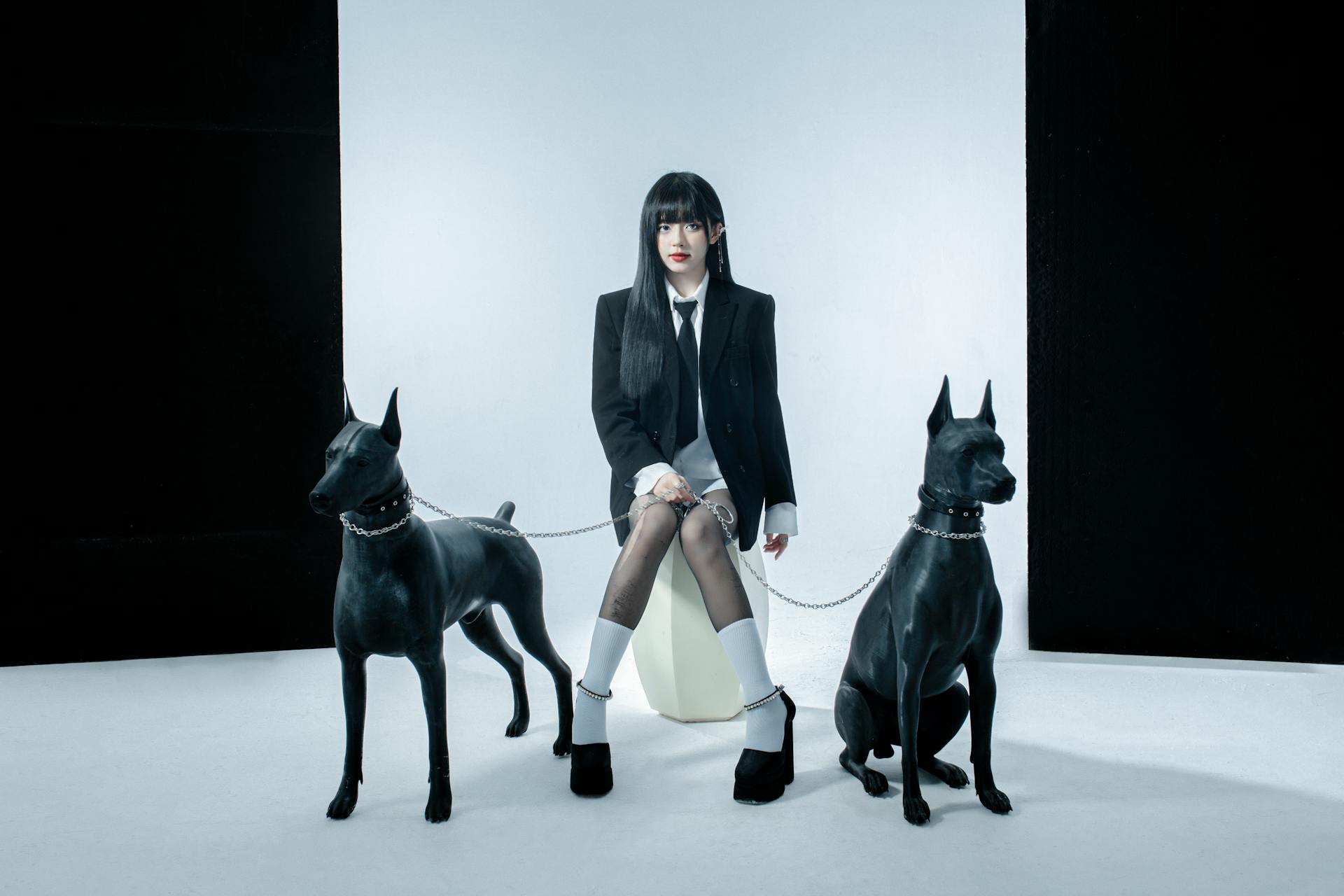
To get started in dog sports, you'll need to begin with dog training. Get Started in Dog Training is a great resource to learn the basics of dog training, including housebreaking, obedience, and agility training.
If you're unable to attend in-person dog sports events, virtual dog sports & events are a great alternative. Virtual Dog Sports & Events allows you to participate in dog sports from the comfort of your own home, making it a great option for those with busy schedules or mobility issues.
Related reading: Obedience Training for Doberman Pinscher
Health Considerations
As a German Doberman Pinscher owner, it's essential to be aware of the potential health concerns that come with this breed. Many diseases and health conditions are genetic, meaning they're related to your pet's breed, and your German Doberman Pinscher is more at risk than other dogs.
Some common health issues in German Doberman Pinschers include elbow dysplasia, hip dysplasia, cataracts, obesity, thyroid disease, and heart disease. These conditions can be extremely expensive to treat, so it's crucial to prepare for the future.
For your interest: Doberman Pinscher Hip Dysplasia
Here are some common health conditions in German Doberman Pinschers:
Health Conditions of Both Breeds
Both breeds, the German Pinscher and the Doberman, are generally healthy, but they do come with some potential health concerns.
Elbow dysplasia and hip dysplasia are common issues in both breeds, which can lead to arthritis and mobility problems if left untreated.
Obesity is a significant concern for both breeds, which can lead to a range of health issues, including diabetes and heart disease.
Cataracts, thyroid disease, and heart disease are also potential health concerns for the Doberman.
For the German Pinscher, cervical vertebral instability, cardiomyopathy, and Von Willebrand’s disease are additional concerns to be aware of.
Here's a summary of common health issues for both breeds:
Key Considerations
As you consider bringing a German Pinscher or Doberman into your family, it's essential to think about the potential health considerations. Both breeds can be prone to certain health issues, so it's crucial to be aware of these potential problems.
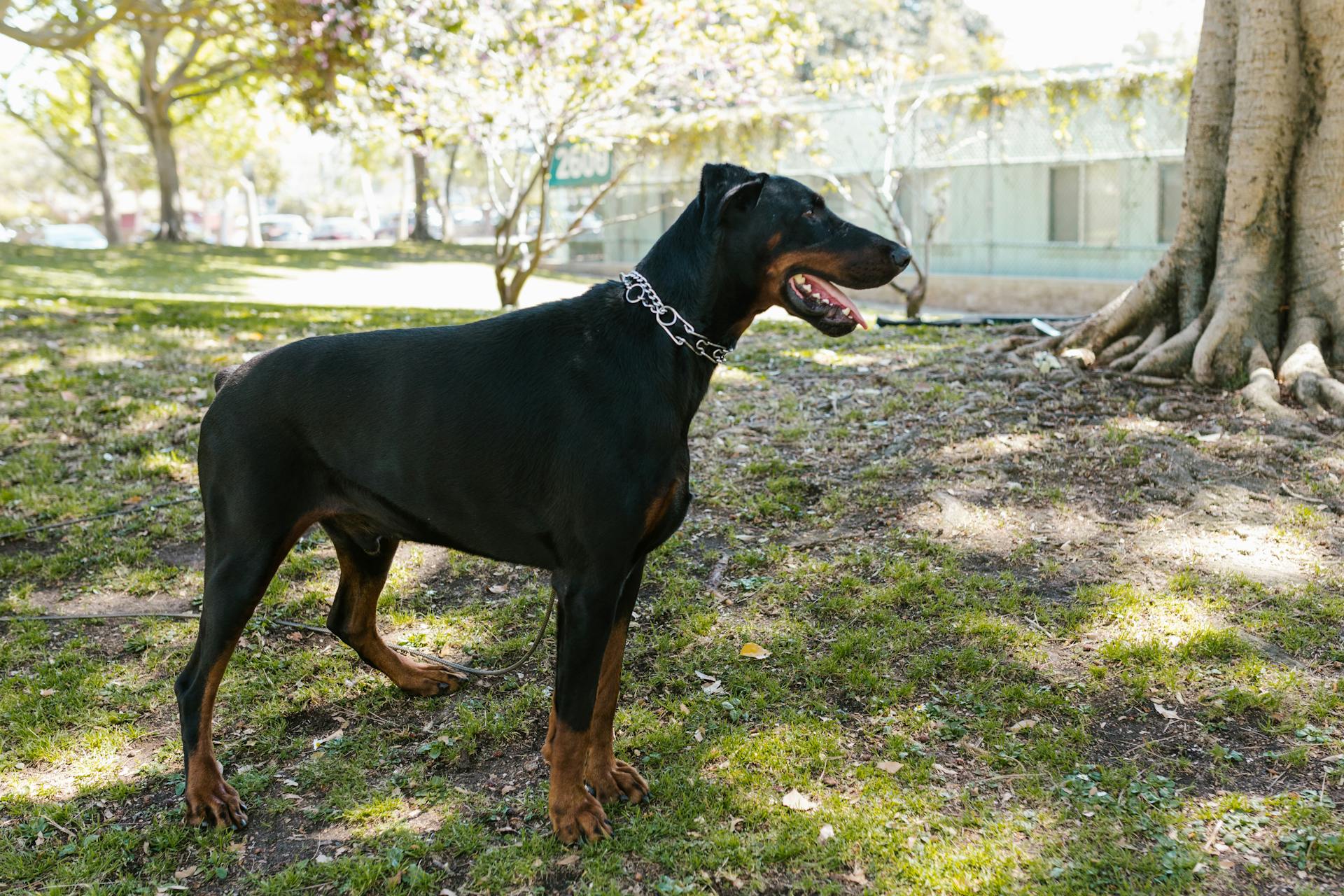
Elbow dysplasia and hip dysplasia are common health issues that can affect both breeds, causing pain and mobility problems. These conditions can be expensive to treat, so it's essential to work with a reputable breeder who has taken steps to minimize the risk.
German Pinschers are also prone to cervical vertebral instability, which can cause neck pain and other issues. Meanwhile, Dobermans are more likely to develop cardiomyopathy, a condition that affects the heart.
Obesity is a significant health concern for both breeds, as it can lead to a range of other problems, including diabetes and arthritis. Maintaining a healthy weight through regular exercise and a balanced diet is crucial for these breeds.
Here are some of the most common health conditions that affect German Pinschers and Dobermans:
By understanding these potential health issues, you can take steps to prevent or manage them, ensuring that your new furry friend stays happy and healthy for years to come.
Frequently Asked Questions
Is there a difference between a Doberman Pinscher and a German Pinscher?
Yes, there is a difference between a Doberman Pinscher and a German Pinscher, with the Doberman being taller and heavier with a more slender build. The German Pinscher, on the other hand, has a more muscular build.
What is the difference between American Doberman and German Doberman?
There is no such breed as the "German Doberman", the correct distinction is between the American Doberman and the European Doberman. The main difference between the two is their temperament and work ethic.
How much is a German Doberman Pinscher?
A German Doberman Pinscher typically costs between $500 to $2,250, depending on factors like breeder reputation and coat color. Prices may vary, but expect to pay around $1,000 on average for a Doberman puppy.
What 2 breeds make a Doberman?
The Doberman Pinscher is believed to be a combination of several breeds, but its exact ancestry is uncertain. Experts suggest it may include breeds like the German Pinscher and Rottweiler.
Featured Images: pexels.com
